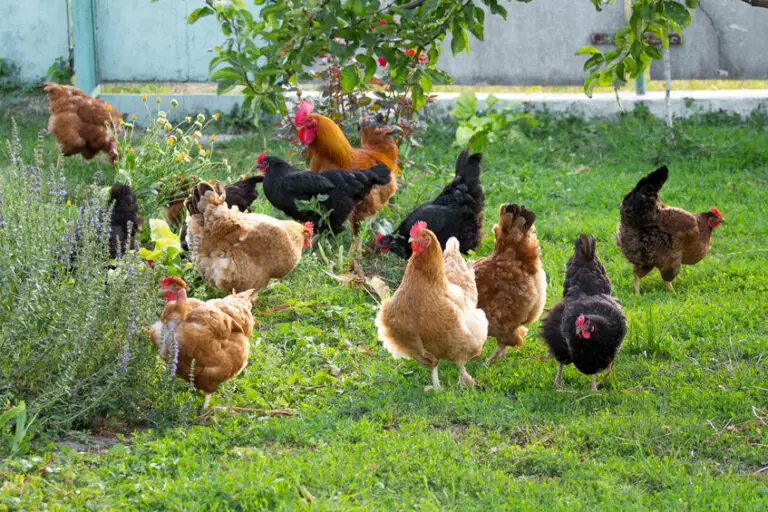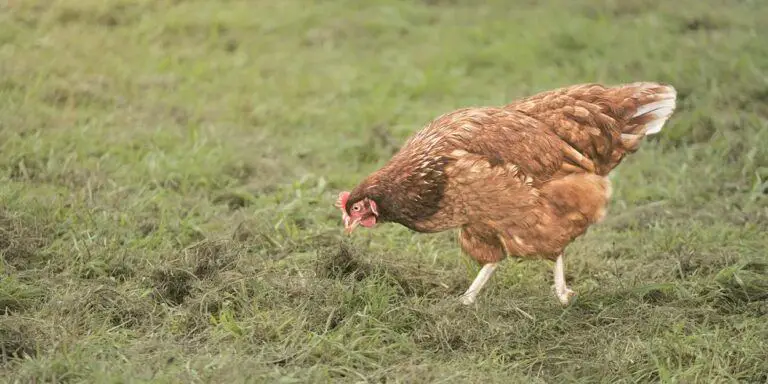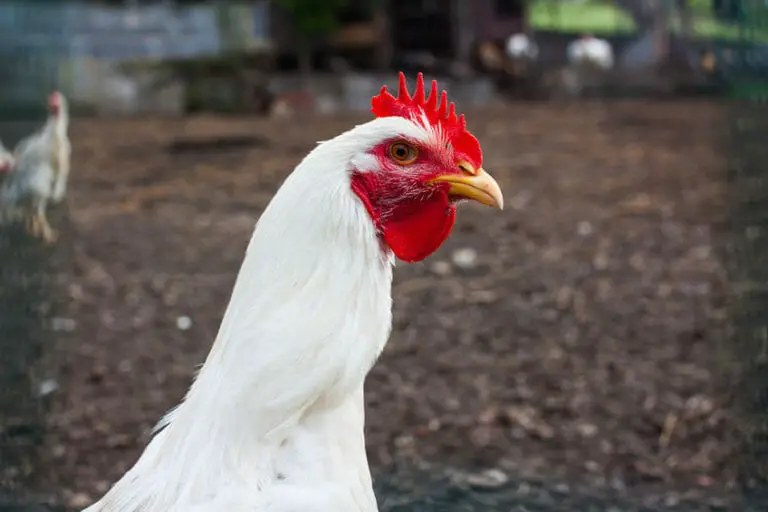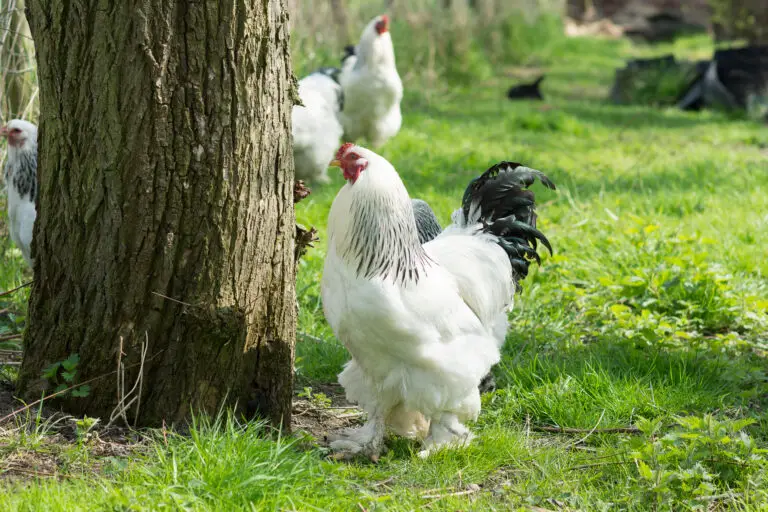Buff Orpington Chicken Breed: A Comprehensive Profile
We have a breed that has all the “bells and whistles.” If you are looking for an egg-layer or source of meat, you’ve come to the right place. Families love this breed because of its “teddy-bear-like” temperament and appearance. We give you the Buff Orpington chicken breed, a very friendly, lovable chicken!
Overview
We can’t help but picture a bulked-up muscle chicken walking around with its wings flexed as if it were a bodybuilder. However, because its name infers “buff,” it doesn’t mean the literal sense. “Buff” refers to the color of the chicken, which is light brown and yellow.
|
Purpose
|
Size (large)
|
|
Lifespan
|
Temperament
|
|
Hardiness
|
Eggs
|
|
Plumage
|
Pecking Order
|
History And Background
William and Jane Cook of Tower House, Orpington, Kent (England) were avid chicken breeders back in the late 1800s. Their desire to develop a chicken with a particular color and size weighed on their minds as they crossed many breeds trying to reach the “golden breed.”
William spent his teen years working as a coachman. In his off time, he developed a keen interest in poultry. Little did he know that he would become the creator of one of the world’s most popular chicken breeds.
He and his wife strategically bred various breeds together. He not only developed the Buff Orpington but the Black and the White.
Parentage of The First Orpington Breed
William Cook developed the Black Orpington as a result of crossing several other breeds.
Parentage of The Buff Orpington Breed
The Orpington breed was classified and recorded as official in 1888. The Buff Orpington was officially recognized as a breed 6 years later.
Varieties of Orpington chickens began to slowly make their way into the U.S., where they were recognized as a breed starting in 1902 with the Buff Orpington.
A year later, William personally carried an importation of Buff Orpingtons to the U.S., where he introduced them to the midwestern farmers.
He pointed out the breed characteristics as being both a heavy egg layer and a good source of meat. Midwest farmers bit at the chomp to get their own Buff Orpingtons which led to an explosion in this breed’s popularity.
It’s rare today to see a chicken owner without a Buff Orpington included in their flock.

Varieties
William Cook went on to create other varieties of Orpingtons in addition to the Black Orpington. The White Orpington came next, with the Buff following after that.
Later came the Jubilee and Spangled. The Cuckoo Orpington was an additional creation by his son-in-law, A.C. Gilbert.
Although there are different kinds of Orpington chickens, the American Poultry Association only recognizes four breeds as their standard; Black, White, Blue, and Buff.

Appearance: Male vs. Female
How do I know if my Buff Orpington is a rooster or hen?
Buff Orpingtons have rather subtle differences that set the males apart from the females. When they are young, it’s challenging to sex them.
Adult males are, of course, larger, more erect, and have longer/thicker legs. Their wattles and combs are a vibrant red, whereas females are not.
In females, the comb is more flush with the head (males have erect combs.) Perhaps the most noticeable feature that sets the male apart from the female is the feathers.
Males have feathers that drape along the middle of the back to the tail. The tail feathers are erect. They also have a cape of heavy feathering around their neck and shoulder area.
Health Conditions
Buff Orpingtons are a hardy breed and stand up well in heat and cold.
However, just like any other hardy breed, they can suffer frostbite, overheat, develop bumblefoot or get your typical parasitic infestation of lice or mites.
Hatching
You can hatch your own eggs whether you have a rooster or not. You can purchase hatching eggs from a breeder and introduce them to one of your Buff hens to sit on.
This breed will take easier to eggs than other breeds. We do recommend that you go to a reputable breeder for fertile eggs rather than buying them online or in a store.
If you happen to be lucky and have a Buff rooster, hooray for you! You have all the makings of a natural course to have some little chicks.
It takes 21 days for a fertile egg to hatch.
Pros And Cons
The “pros” outweigh the “cons” when it comes to this breed of chicken.
Frequently Asked Questions
How many years will a Buff Orpington lay eggs?
Hens start to lay eggs when they reach 18 weeks old. The first year of their life will be the highest egg yield. Buff Orpingtons lay 200-280 eggs a year, and that’s an estimation for the first year of their life.
After the hens hit the two-year mark, their egg-laying begins to decline. Egg-laying also declines in the fall and during molting.
Other factors aside from age, season and molting that affect egg production include the quality of feed you give them, the health of their coop environment, and health conditions.

Are Buff Orpingtons winter-hardy?
Buff Orpingtons are cold, hardy; however, their wattles, combs, and legs can get frostbite. Like any other chicken breed, when temperatures drop to extreme lows, supplemental heat may be needed in the coop.
Can I get a Spangled, Jubilee, Cuckoo, or Blue Orpington here in the U.S.?
Although finding many of the more common Buff Orpington breeds is not hard, finding the varieties listed above will prove challenging because of their rarity. There are breeders here in the U.S. that sell what they call “English” Orpingtons which include the Spangle, Cuckoo, and Blue.
A few places to start your search are Feather Lover Farms or Papa’s Poultry. Be prepared to pay a pretty penny for one of these beauties!
Is there a list of all Orpington varieties?
Although we’ve learned a lot about the unique Orpington breed, we’ve also managed to uncover many other Orpington varieties as well.
Here is a full list of those we did find.
- Black
- Blue
- White
- Buff
- Spangled
- Jubilee
- Cuckoo
- Chocolate Cuckoo
- Chocolate
- Silver-Laced
- Isabel Cuckoo
- Lavender-Laced
- Lavender
- Lemon Cuckoo
- Partridge
Closing Thoughts
We hope you’ve learned enough about the beautiful Buff Orpington to know whether or not it’s one you want to include in your flock.
Although it may not be the best egg layer in the flock, it’ll be up there with the best of them. Buffs are a favorite with our kids since they’re able to pet them, pick them up, and “play” with them. This friendliness is a huge reason they’re so popular with flock owners all over the world.
Thanks for stopping by and Happy “Chickening!”







